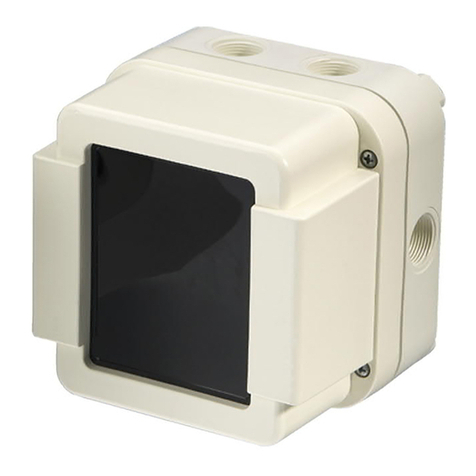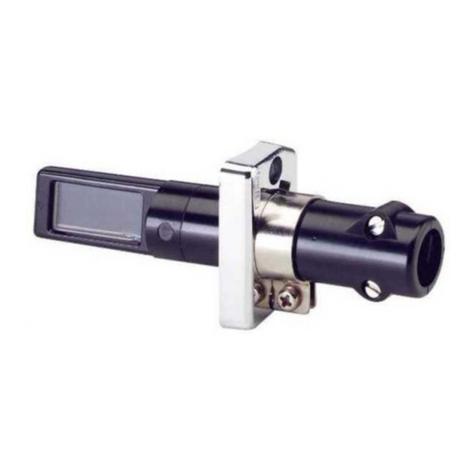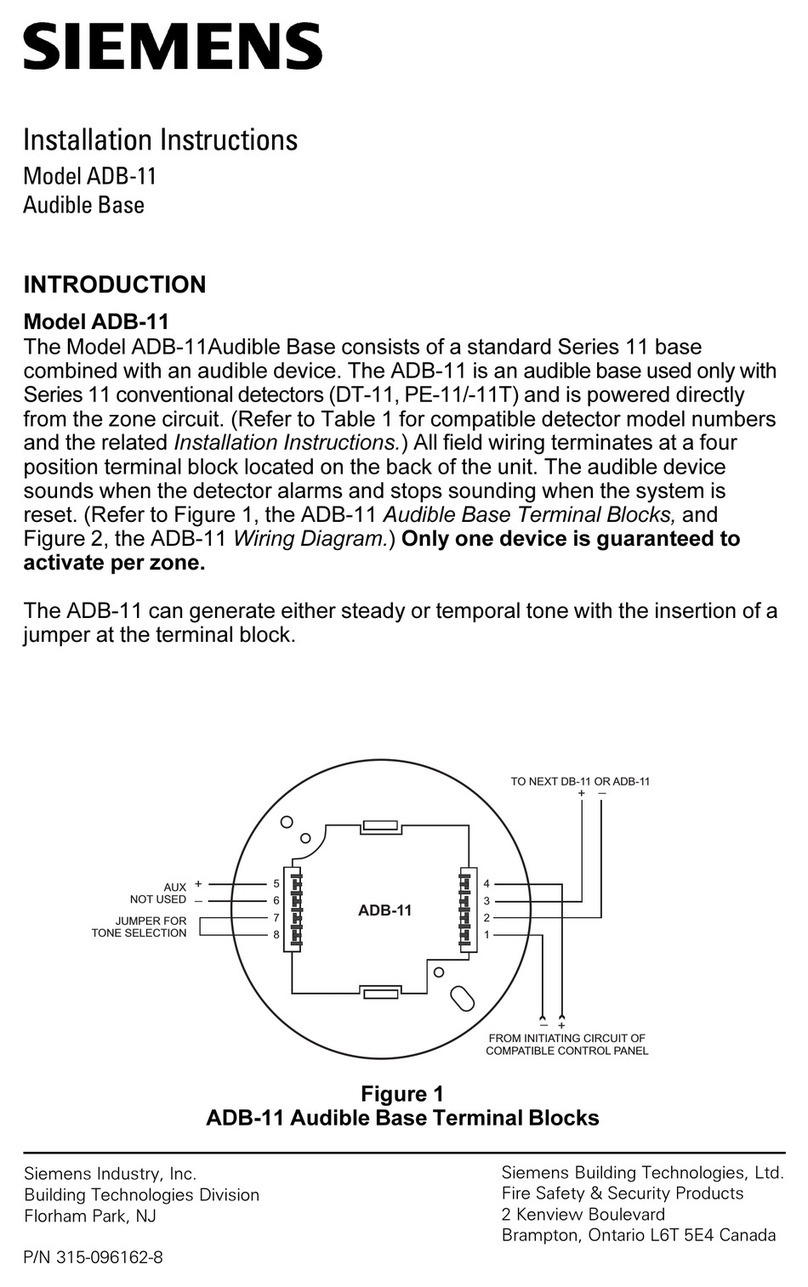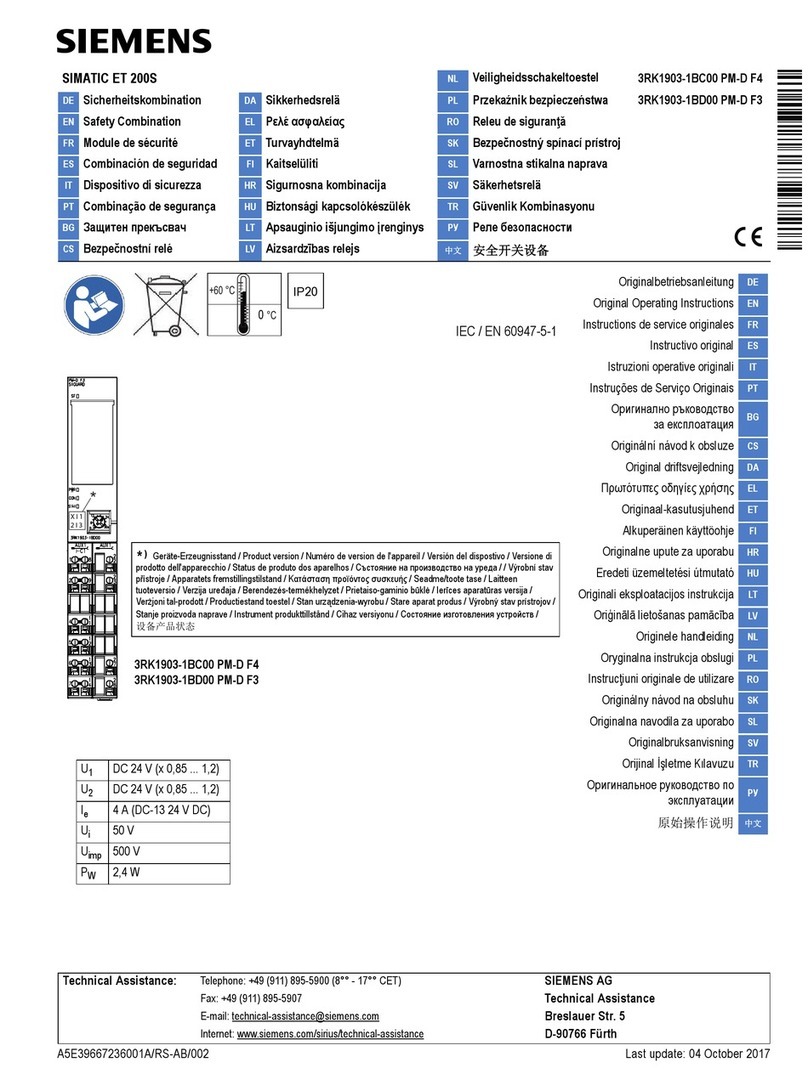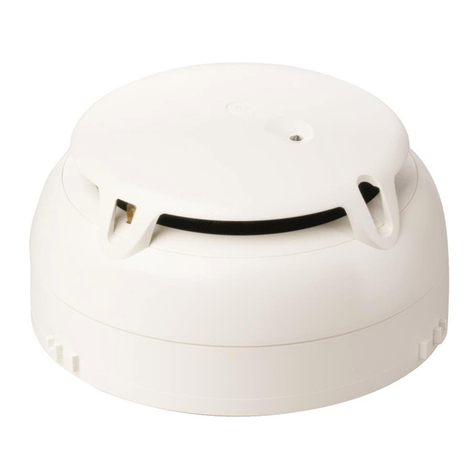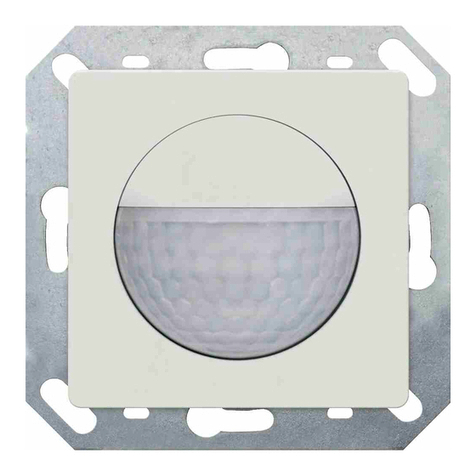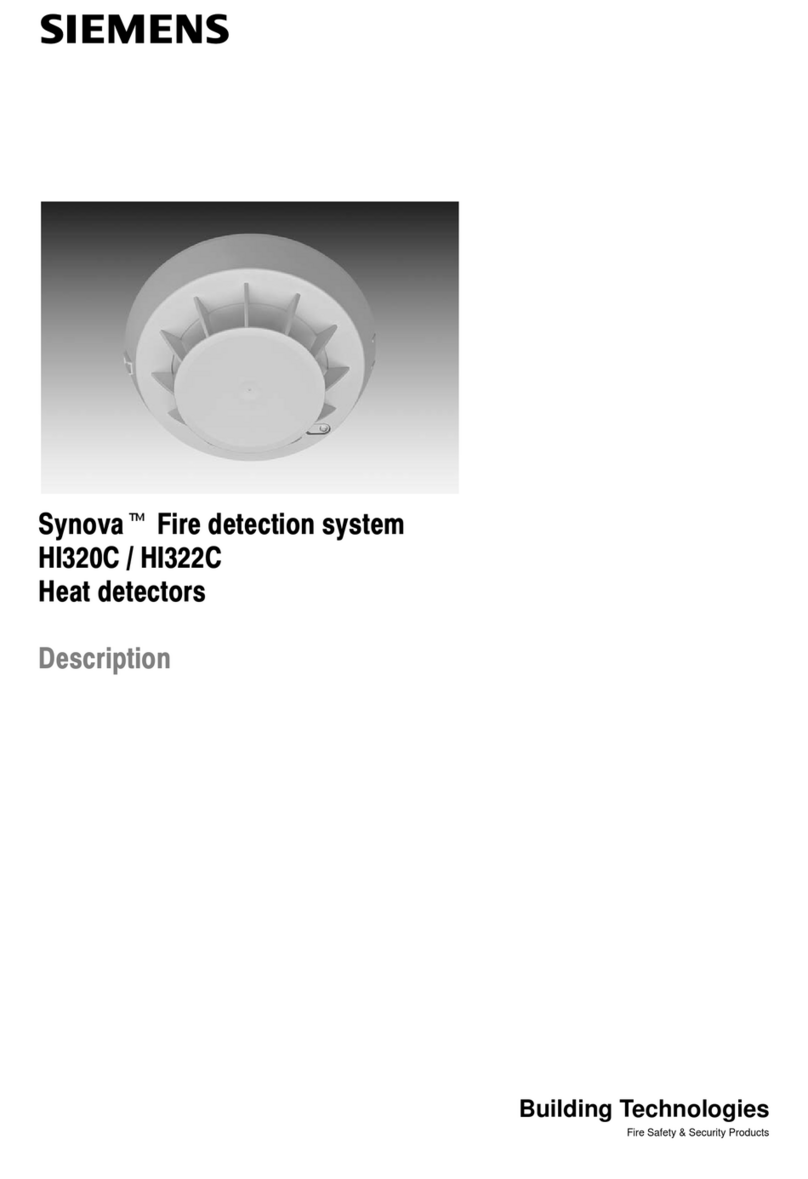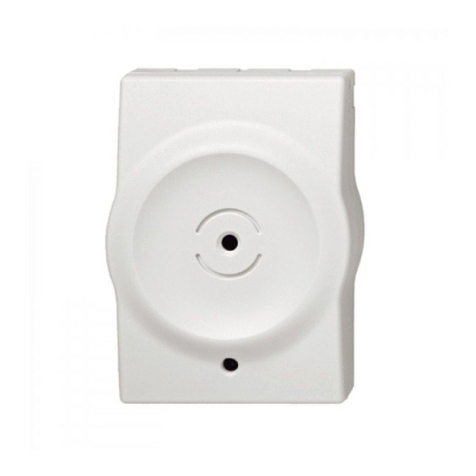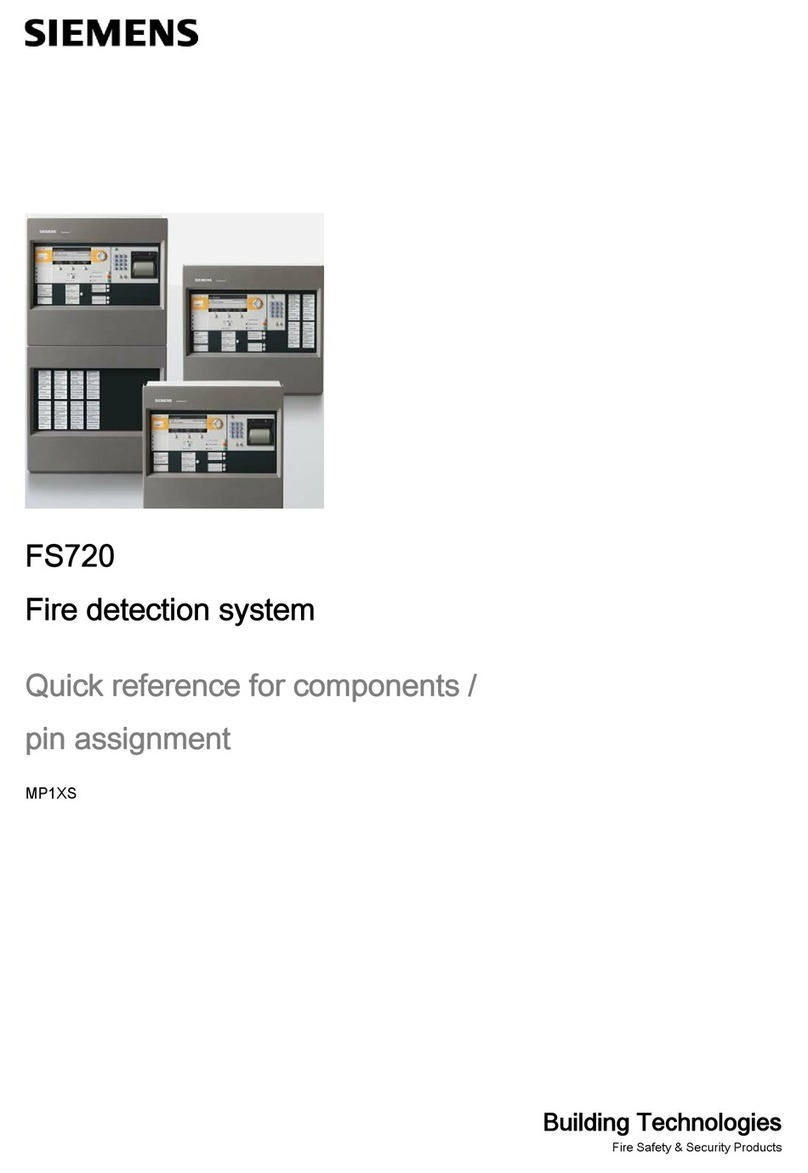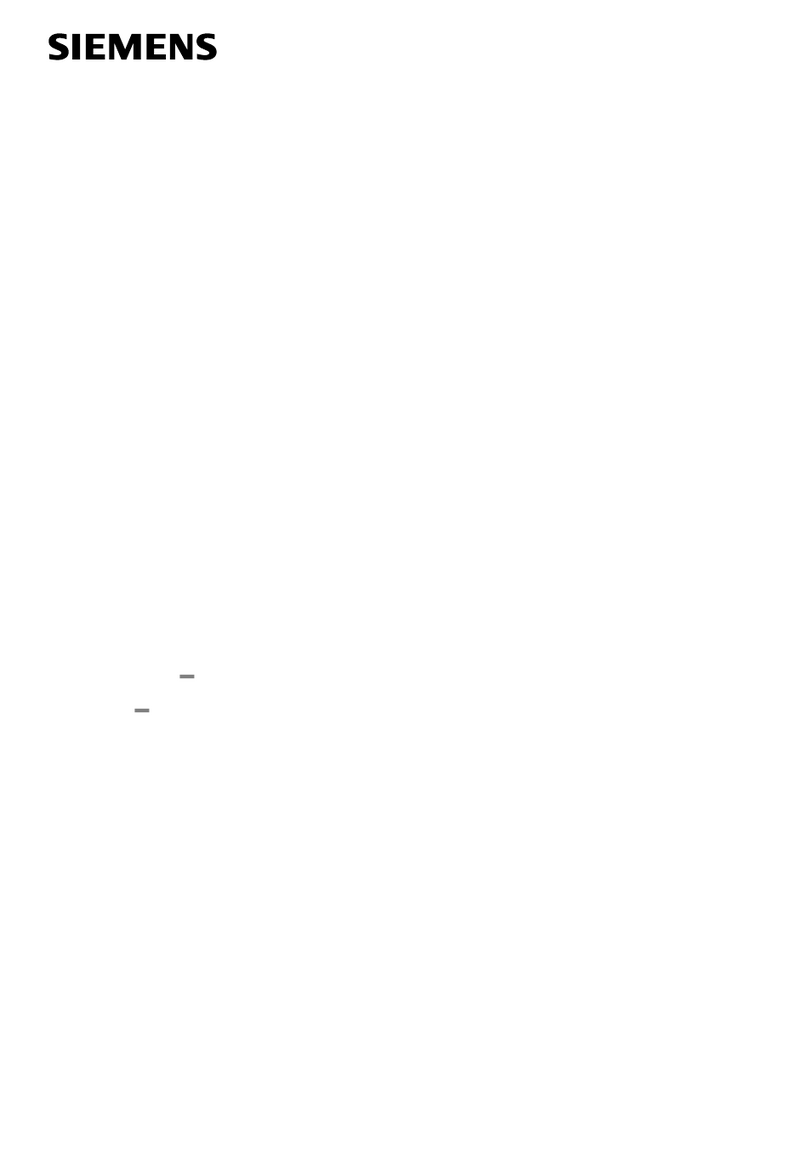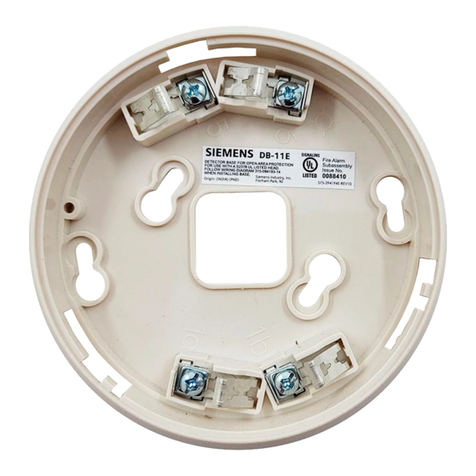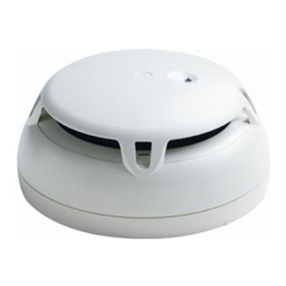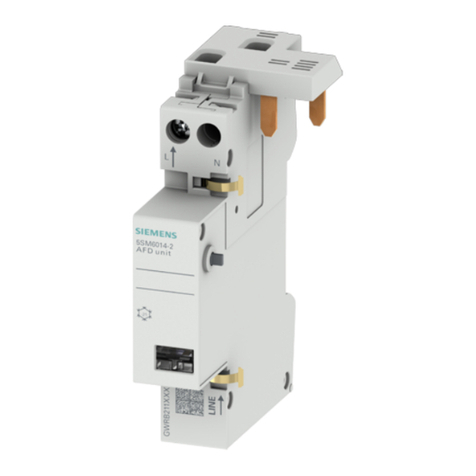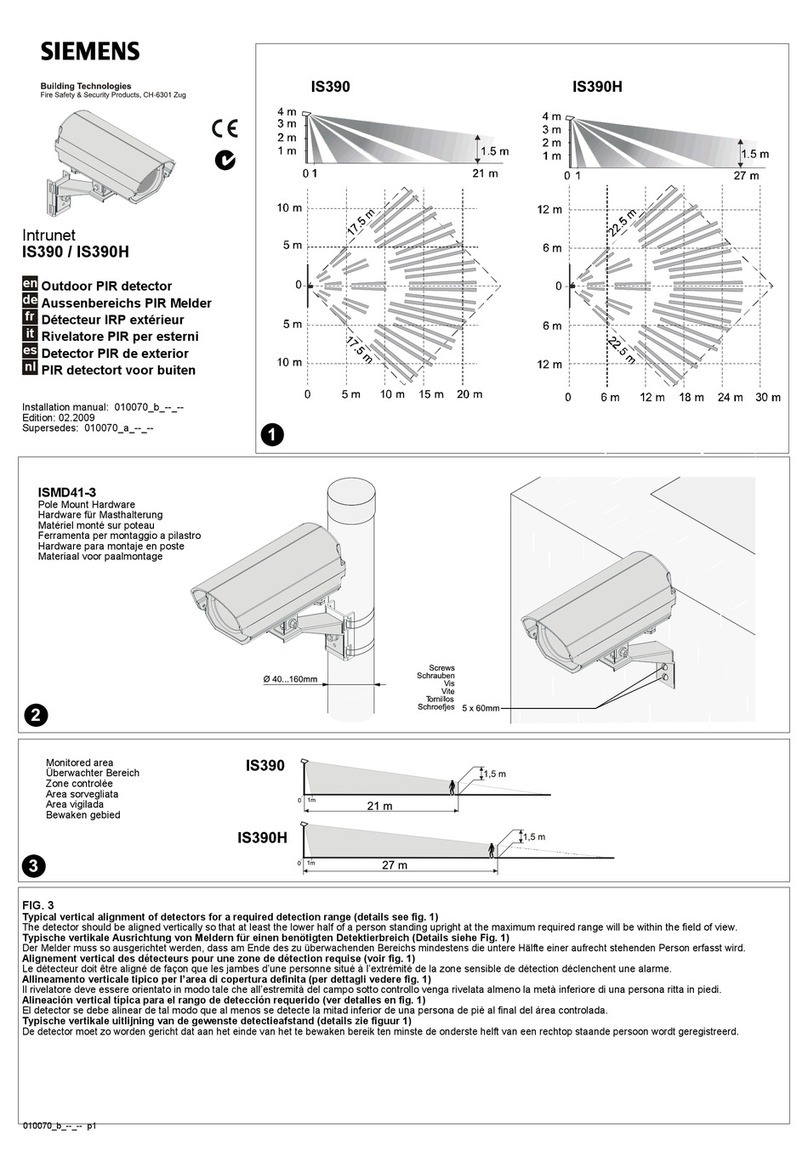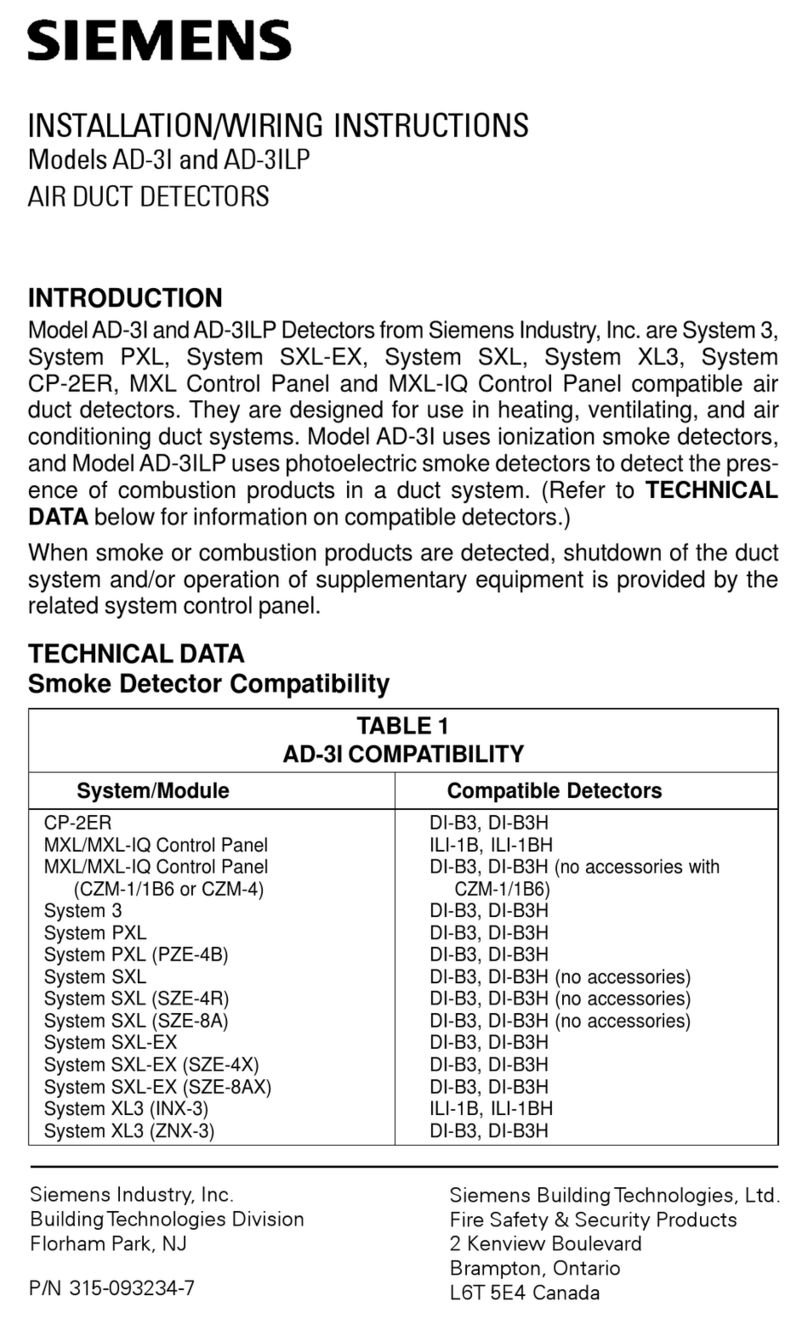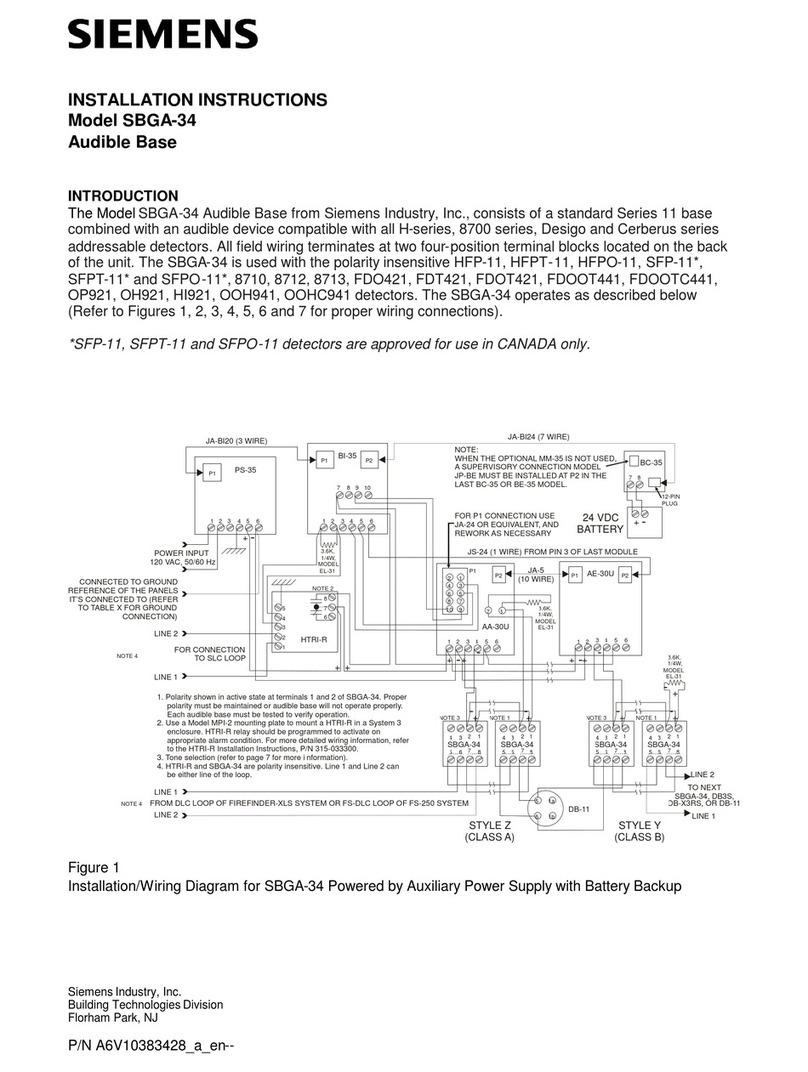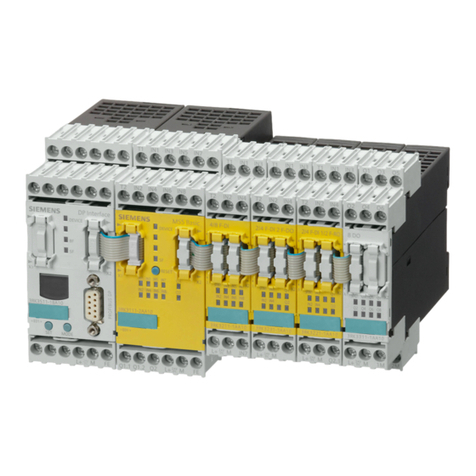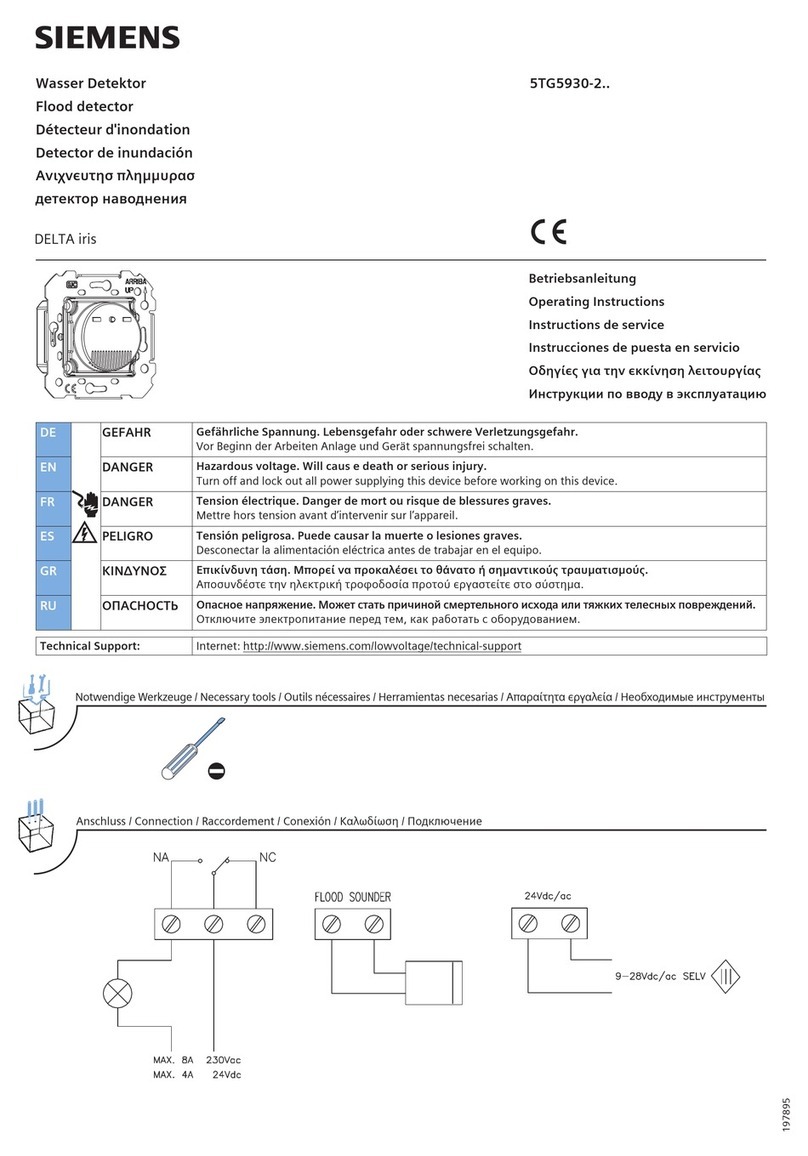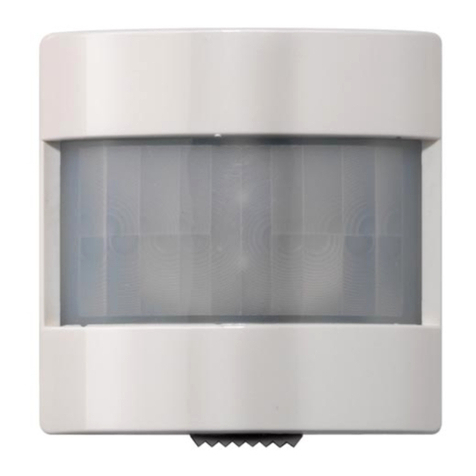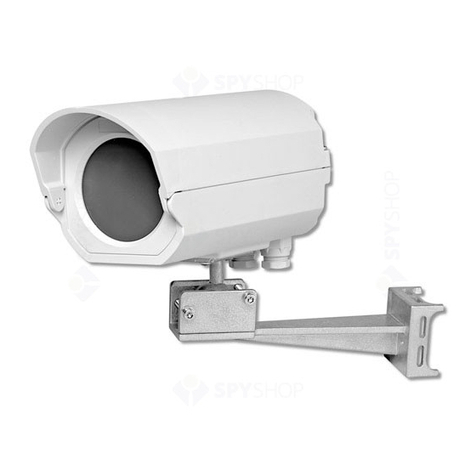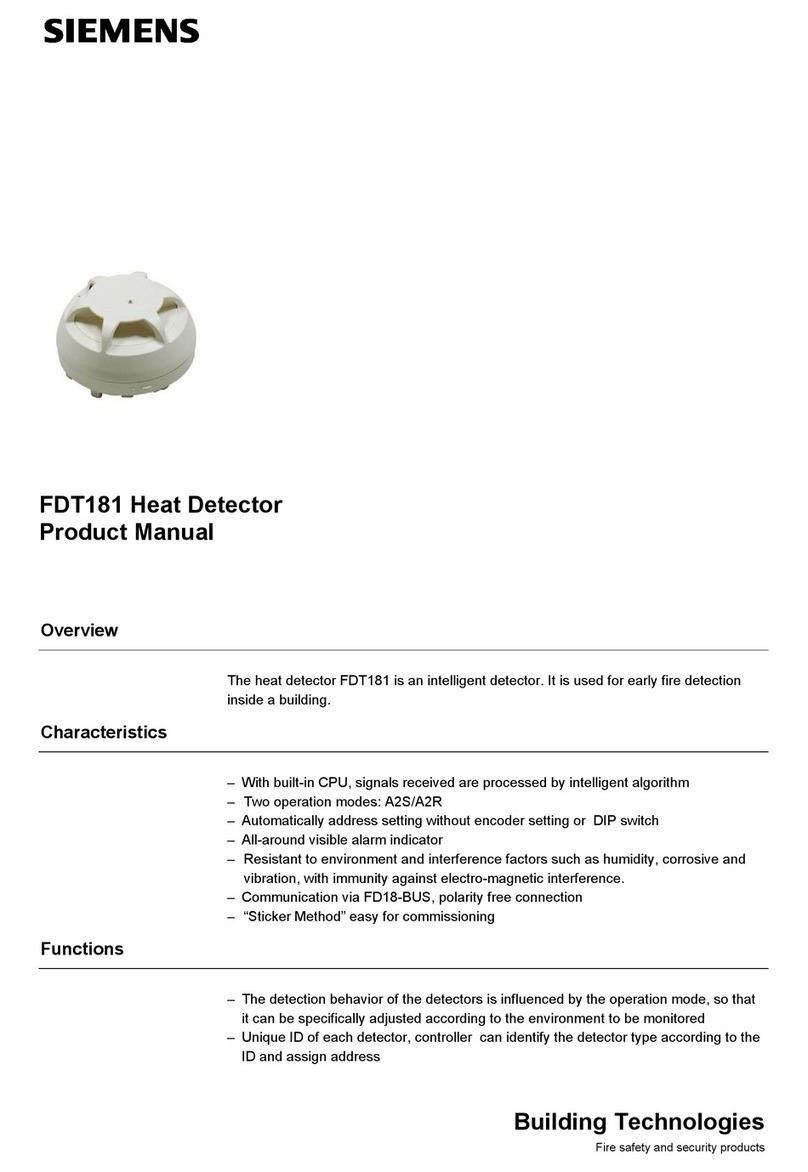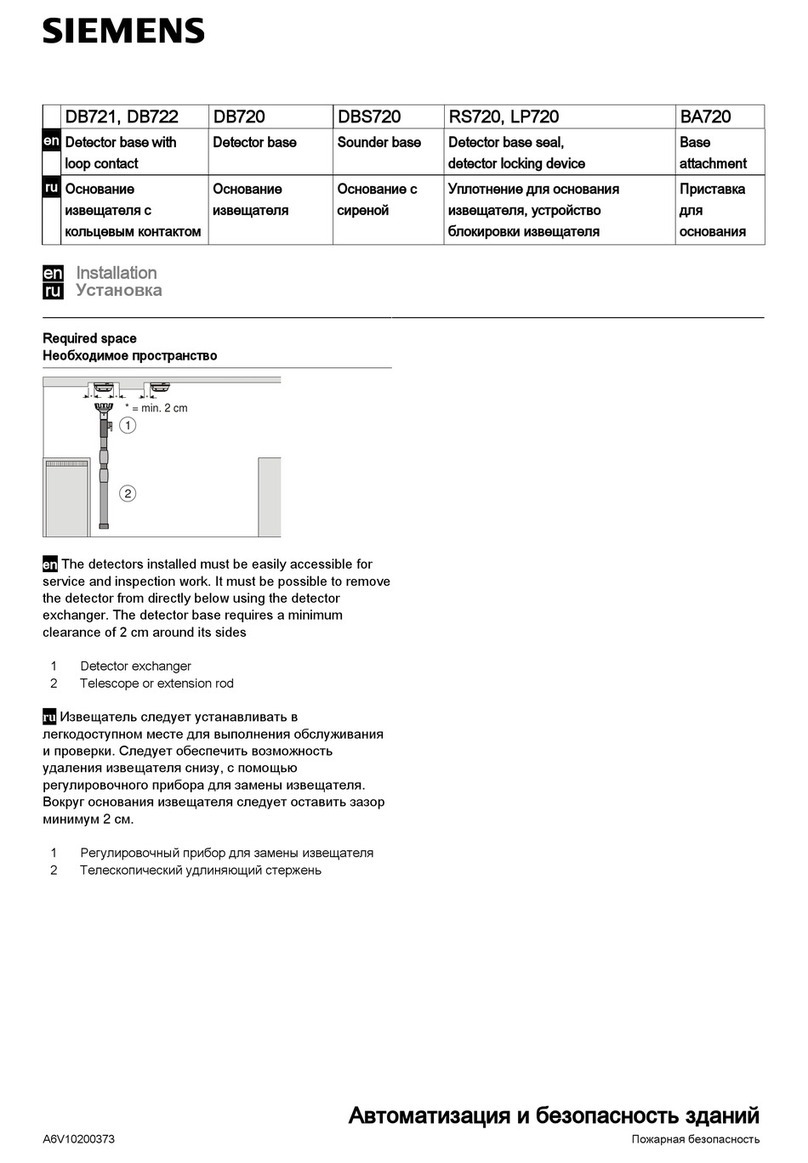
Siemens Industry, Inc.
Building Technologies Division
A6V10324655_en--_e2
SPECIAL CEILING CONSTRUCTION FACTORS
Ceiling obstructions change the natural movement of air and
combustion products. Depending on the direction of smoke
travel, joists and beams can slow the movement of heated air
and smoke, while pockets between them can contain a reduced
level of smoke. Take obstructions created by girders, joists,
beams, air conditioning ducts, or architectural design into
consideration when determining area protection. Refer to the
Initiating Devices chapter of NFPAStandard 72 for Location and
Spacing requirements for specific types of construction; e.g.
beam, suspended, level, sloped and peaked ceilings.
TEMPERATURE – HUMIDITY – PRESSURE –AIR VELOCITY
Thetemperature range for the FDOOT441detector is32°F (0°C)
to 120°F (49°C). Use the detector in environments where the
humidity does not exceed 95% (non-condensing). Normal
changes of atmospheric pressure do not affect detector
sensitivity. The air velocity range is 0-4000 ft/min for open areas
applications. Follow detector spacing and location requirements
in NFPA 72 Chapter for High Air Movement Areas and Control
of Smoke Spread. The detectors can also be installed in duct
applications between 0 and 4000 ft/min. For duct installations
follow detector installation requirements in NFPA 90A, Chapter
for Special Ceiling Construction Factors. When the detectors
employ a fixed temperature rating of 1650F or less, they are
intended for a maximum installation temperature of 1000F
(37.80C).
ULlisted with STI Mechanical ProtectionGuard Model:STI-9604
(see www.STI-USA.com for details).
LED INDICATOR OPERATION
The Model FDOOT441 contains an LED indicator capable of
flashing either one of three distinct colors: green, yellow, or red.
During each flash interval, the microprocessor-based detector
monitors the following:
• Smoke in its sensing chamber
• Smoke sensitivity is within the range indicated on the
nameplate label
• Internal sensors and electronics
Basedon the results of themonitoring, theLED indicator flashes
the following:
hsalF roloCnoitidnoC lavretnIhsalF )sdnoceS(
*neerG ekomS.noitarepoyrosivrepuslamroN .stimildetarnihtiwsiyti
vitisnes 01
wolleY sdeendnaelbuortnisirotceteD .tnemecalper 4
deRmralA1
oN *sehsalF tnemecalperro,derewoptonsiro
tceteD .dedeensi -
fonoitpircsedgnidnopserrocehtwollofesaelP.ffodenrutebnacDEL* .desulenaPeht
DETECTOR PROGRAMMING
Each detector must be programmed to respond to a unique
system address between 001 - 050 for FC2005.
• To program the detector address, use the Model DPU
Device Programming Unit. Refer to the DPU Manual, P/N
315-033260.
• Record the loop and device number (system address) for
the detector on the detector label and on the base to
prevent installing the detector in the wrong base. The
optional DPU label printer can be used for this purpose.
Each detector provides pre-programmed parameter sets which
can be selected by the panel. The FDOOT441 provides two
different alarm channels: multi-criteria (UL268) and direct in-
duct (UL268A), and heat (UL521) which can be used
simultaneously and can be configured and switched on or off
individually by the panel.Follow the description and instructions
provided in the operation manual of specific control panel used.
The FDOOT441 can be set to the FDOOT441 Selectable
Application Profiles, the FDOOT441 Selectable Fixed
Temperature Threshold Profiles and the FDOOT441 Selectable
Alarm Threshold Setting Profiles shown in the tables below and
to the right.
Additionally the detector can have another channel that can be
configured by the panel to have a low or high temperature
warning in the range from -4° to 120°F (-20° to 49°C). (Not with
FC2005.)
erutarepmeTdexiFelbatceleS144TOODF seliforPdlohserhT 531erutarepmetdexiF
0
F
541erutarepmetdexiF
0
F
551erutarepmetdexiF
0
F
561erutarepmetdexiF
0
F
571erutarepmetdexiF
0
F
531erutarepmetdexiF
0
51)RoR(esiRfoetaR+F
0
F
571erutarepmetdexiF
0
51)RoR(esiRfoetaR+F
0
F
531erutarepmetdexiF
0
02)RoR(esiRfoetaR+F
0
F
571erutarepmetdexiF
0
02)RoR(esiRfoetaR+F
0
F
seliforPgnitteSdlohserhTmralAelbatceleS144TOODF dlohserhTtf/%05.2 dlohserhTtf/%00.3 deifirev,dlohserhTtf
/%05.2 deifirev,dlohserhTtf/%00.3
ELECTRICAL
Forinformation on electricalcharacteristics ofthe detector, refer to
theFDOOT441/FDOOTC441Technical Manual,A6V10325549at
https://www.buildingtechnologies.siemens.com/extranet/ba-sp/.
Refer to the panel Installation, Operation and Maintenance
Manual for maximum line impedance of the loop driver.
WIRING
Detector bases for Model FDOOT441 should be connected as
shown in Figure 2.
DETECTOR MOUNTING
The recommended orientation of the detector for wall mounting
isshown in Figure3. To ensureproper installationof the detector
head into the base, be sure the wires are properly dressed at
installation:
• Position all wires flat against the base.
• Take up all slack in the outlet box
• Route wires away from connector terminals.
TO INSTALL DETECTOR HEAD:
• Rotate detector counterclockwise while gently pressing on
it until the detector seats fully into base.
• Then rotate the detector clockwise until it stops and locks in
place. Insert optional locking screw (Order Model LK-11).
